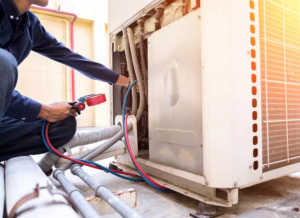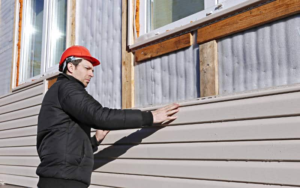Medical Spa Seo to generate clients and grow their business. This article will cover on-page, local, and technical SEO strategies that can increase your online visibility and generate more appointments.
A successful med spa SEO strategy should incorporate terms that attract people who are looking for massages, micro-needling, Botox, and laser hair removal. These keywords should be included in the website title and description to increase relevance and compel search engine users to click.

In the medical spa industry, SEO is a valuable tool that can help you stand out from your competition. It helps you achieve high visibility on the web and attracts more clients, which leads to higher profits. But, how do you make sure your website is optimized for SEO? Dori Talks shares some tips on how to use content marketing in your med spa business.
Medical spas have a unique opportunity to educate potential customers about treatments and procedures. This is especially true when targeting clients who are researching various services online before making a decision. To capitalize on this, med spas can create informative blogs that align with common medical spa treatments and address common concerns. They can also produce eye-catching infographics and videos to grab attention.
A strong content marketing strategy is important for any business, but it’s especially critical for a medical spa. Your website is the face of your company, and it’s important that it’s up-to-date with all the latest information about your services and treatments. Your social media accounts are another important way to reach potential customers and build your brand. However, you should choose social media platforms that are best suited for your business. For example, TikTok is a great platform for med spas to post fun videos that showcase the beauty of their treatments and promote their offers.
In addition to content marketing, you should invest in local SEO. This involves optimizing your website and online listings to rank in the local search results for your area. This can be done by using specific keywords, optimizing meta tags and adding high-quality photos and descriptions to your website. It is also a good idea to use Google’s “People Also Ask” feature and FAQ pages to improve your ranking.
SEO is an ongoing process that should be updated regularly to keep up with changes in the medical spa industry. With so many med spas competing for patients, it’s important to stay ahead of the curve by implementing traditional and advanced SEO strategies. By following these tips, you can optimize your med spa’s digital presence and achieve top rankings in the search engine results pages (SERPs). In addition, SEO for medical spas is a crucial way to drive interested customers through the sales funnel.
On-page optimization
While traditional SEO strategies are still important, medical spas need to invest in more advanced tactics to compete. This includes reputation management, which is an essential component of any medical or aesthetic practice. This strategy involves encouraging and analyzing online reviews for your business, helping you rank higher in search engine results. The key to managing your online reputation is ensuring that you get the most positive reviews and removing any negative ones. In addition, you should also focus on local med spa SEO and mobile SEO to reach a wider audience.
In order to optimize your website for search engines, you need to know what keywords are relevant to your business and services. This can be done by searching for relevant terms on Google and analyzing the top search results to find out which ones are the most effective. You should then incorporate these keywords into your content and optimize your website accordingly. This process can be time-consuming and requires a lot of research, but it will pay off in the long run.
One of the most effective ways to optimize your website is to create a blog and publish helpful articles related to the treatments offered by your med spa. This will help you improve your rankings in the SERPs and increase traffic. Additionally, blogging can help you rank for “long-tail” keywords, which are stringed keywords that describe specific treatments. For example, if you want to promote the MonaLisa Touch procedure, you can write a blog post on it, which will boost your rankings for that keyword.
A robust digital marketing campaign can improve your med spa’s visibility in search engines, increasing patient referrals and revenue. However, it can be difficult to manage and track all aspects of your campaign without a digital marketing platform. A reputable company can provide you with a custom platform to manage your online presence and track results.
Medical spas face stiff competition from both national and local competitors. Most of your clientele perform a Google search before they visit a med spa, so you need to be visible on the first page of search engine results. SEO is a crucial tool for any med spa, and implementing an effective strategy can significantly boost your business’s profits.
Link building
Having an effective online presence is a critical component for medical spas to grow their business and increase client satisfaction. SEO strategies are a key element in this effort, and can help improve the visibility of your website, drive traffic, and convert leads into clients. However, it is important to understand the basics of SEO for medical spas before you implement a strategy. In this blog post, we’ll discuss some of the key elements of SEO for medical spas, including keyword research and content marketing.
Effective medical spa SEO relies on stellar quality content and in-depth keyword research. This process is vital for establishing your med spa as an authority in the industry, and helps you attract more potential customers. This type of content includes blog articles, informative guides, and informative case studies. It is also important to build backlinks by promoting this content through social media, industry influencers, and online publications.
Local SEO is another critical aspect of med spa SEO. It allows your business to compete with local competitors for the top search engine results page (SERP) positions. It involves optimizing your website and content for specific geographical areas. You can do this by creating separate service/treatment pages for each of your offerings, and incorporating city-specific keywords in the title tags, H1s, and throughout the content. In addition, you can also create local citations by listing your business’s name, address, and phone number on online directories and review sites.
Unlike traditional advertising and social media, SEO is an organic way to promote your business. It is also a cost-effective and reliable way to get in front of people who are actively searching for the services your med spa offers. Additionally, it allows you to preemptively answer the questions of your prospects, which builds a “like know trust” factor that ultimately leads to higher conversions. Having a well-thought-out SEO strategy is the best way to maximize your marketing efforts and attract the right clients for your medical spa.
Reputation management
A successful medical spa marketing strategy requires a strong online reputation. According to a Tebra white paper, 72% of patients rely on online reviews when choosing a physician or healthcare provider. While implementing SEO is a great way to boost your online presence, it can be difficult for aesthetics professionals to manage when they are busy seeing clients and conducting treatments. Reputation management solutions are an effective solution for med spas, as they can promote positive online reviews and improve a website’s ranking in search engine results pages (SERPs).
Medical spa SEO is crucial for helping clients find your practice and make an appointment. It involves optimizing your website, online listings, and social media profiles to rank higher in local searches. This technique can make a huge difference for your business, especially since most of your clients are located in the area. It is also important to track the effectiveness of your SEO campaign and make necessary adjustments.
The goal of medical spa SEO is to help potential clients find your website, then convert them into clients. To accomplish this, you should focus on the keywords that your target audience uses to search for the services you offer. Then, optimize your title tags and meta descriptions to include these keywords. This will increase your website’s visibility in search engines and improve the user experience by providing relevant information to the users.
Medical spa SEO includes a wide range of techniques, from on-page optimization to social media marketing. It is important to understand that med spa SEO is not a one-size-fits-all approach, and that it requires an in-depth understanding of the industry and the latest trends. Additionally, it is critical to hire an agency with experience in med spa marketing and a solid track record of success. In addition, an experienced med spa SEO agency should be able to provide you with a detailed report on the results of your campaign. They should be able to explain how the results were achieved, and give you some advice on what to do next. Lastly, they should be willing to customize their strategies to meet your unique needs.




